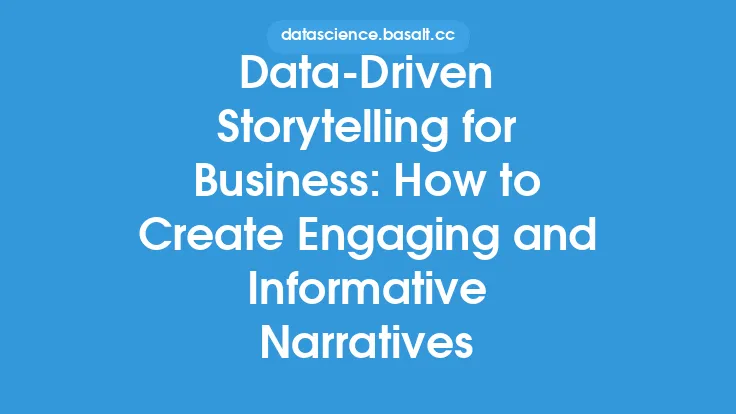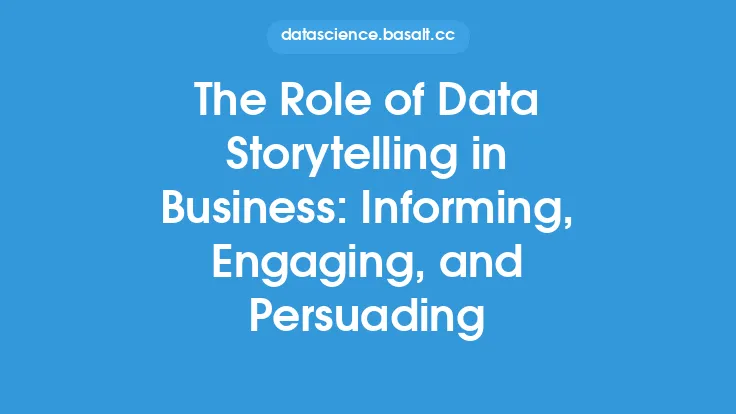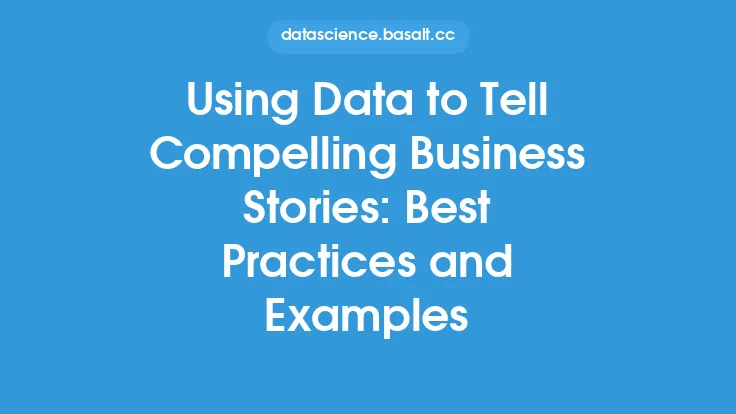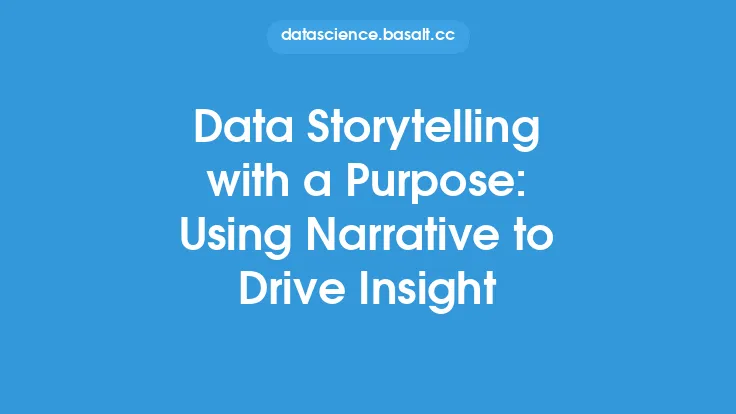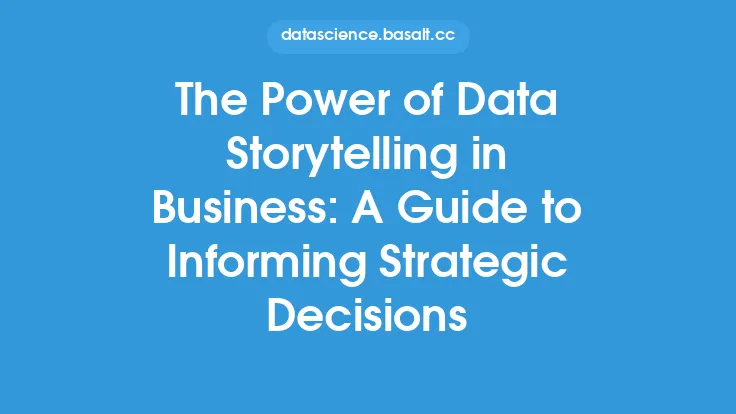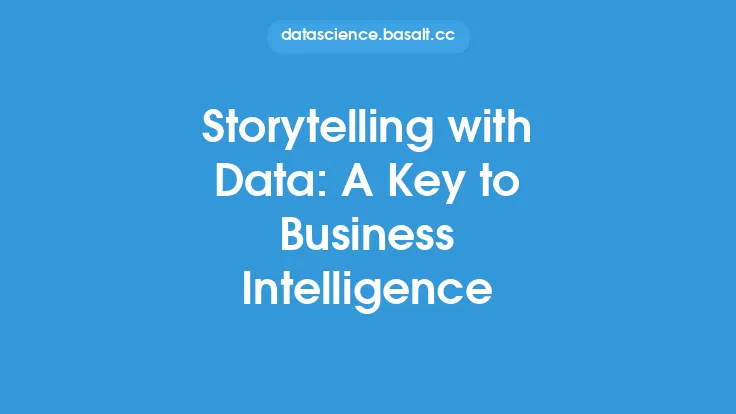In today's data-driven business landscape, organizations are constantly seeking ways to make their data more engaging and accessible to stakeholders. One effective approach to achieve this is by using storytelling to convey complex business data in a more relatable and memorable way. Storytelling has been a fundamental aspect of human communication for centuries, and its application in business intelligence can help to break down barriers and facilitate better understanding of data insights.
Introduction to Storytelling in Business Intelligence
Storytelling in business intelligence involves using narrative techniques to present data in a way that is easy to understand and engaging. This approach helps to create a connection between the data and the audience, making it more likely that the insights will be remembered and acted upon. By using storytelling, businesses can transform complex data into a compelling narrative that resonates with stakeholders, including employees, customers, and investors. Effective storytelling in business intelligence requires a deep understanding of the data, as well as the ability to craft a narrative that is both informative and engaging.
The Benefits of Storytelling in Business Intelligence
The benefits of using storytelling in business intelligence are numerous. Firstly, it helps to increase engagement and participation among stakeholders, who are more likely to be interested in a narrative than a dry presentation of data. Secondly, storytelling helps to facilitate better understanding of complex data insights, by providing context and meaning to the numbers. This, in turn, can lead to more informed decision-making, as stakeholders are able to grasp the implications of the data and make more effective choices. Additionally, storytelling can help to build trust and credibility with stakeholders, by providing a transparent and honest account of the data and its insights.
Crafting a Compelling Narrative
Crafting a compelling narrative is a critical aspect of storytelling in business intelligence. This involves identifying the key insights and themes in the data, and using these to create a story that is both informative and engaging. The narrative should be structured in a way that is easy to follow, with a clear beginning, middle, and end. The use of visualizations, such as charts and graphs, can help to illustrate key points and make the narrative more engaging. Additionally, the narrative should be tailored to the audience, taking into account their level of understanding and interests.
Using Data Visualization to Enhance the Narrative
Data visualization is a powerful tool for enhancing the narrative in storytelling. By using visualizations, such as charts, graphs, and maps, businesses can illustrate key points and make the data more engaging. Visualizations can help to identify trends and patterns in the data, and provide a clear and concise way of communicating complex insights. Additionally, visualizations can be used to create interactive and dynamic stories, which can be explored and analyzed by stakeholders. Some popular data visualization tools include Tableau, Power BI, and D3.js, which provide a range of features and functionalities for creating interactive and dynamic visualizations.
Best Practices for Storytelling in Business Intelligence
There are several best practices that businesses can follow to ensure effective storytelling in business intelligence. Firstly, it is essential to understand the audience and tailor the narrative accordingly. This involves taking into account their level of understanding, interests, and needs. Secondly, the narrative should be focused on the key insights and themes in the data, rather than trying to present every detail. Additionally, the use of visualizations and other interactive elements can help to enhance the narrative and make it more engaging. Finally, businesses should ensure that the narrative is accurate and trustworthy, by using reliable data sources and avoiding bias and manipulation.
Technical Considerations for Storytelling in Business Intelligence
From a technical perspective, storytelling in business intelligence requires a range of skills and tools. Firstly, businesses need to have access to high-quality data, which is accurate, reliable, and relevant to the narrative. This involves investing in data management and analytics tools, such as data warehouses and business intelligence platforms. Additionally, businesses need to have the skills and expertise to analyze and interpret the data, using techniques such as statistical modeling and data mining. The use of data visualization tools, such as Tableau and Power BI, can also help to enhance the narrative and make it more engaging.
Measuring the Effectiveness of Storytelling in Business Intelligence
Measuring the effectiveness of storytelling in business intelligence is critical to ensuring that the approach is achieving its intended goals. This involves tracking key metrics, such as engagement and participation, as well as the impact on decision-making and business outcomes. Businesses can use a range of tools and techniques to measure the effectiveness of storytelling, including surveys, focus groups, and analytics platforms. Additionally, businesses can use A/B testing and experimentation to compare the effectiveness of different narrative approaches and identify areas for improvement.
Conclusion
In conclusion, using storytelling to make business data more engaging is a powerful approach that can help to facilitate better understanding and decision-making. By crafting a compelling narrative and using data visualization to enhance the story, businesses can create a connection with stakeholders and make complex data insights more accessible and memorable. By following best practices and considering technical requirements, businesses can ensure that their storytelling approach is effective and achieves its intended goals. As the use of data and analytics continues to grow in business, the importance of storytelling in business intelligence will only continue to increase, making it an essential skill for businesses to develop and master.
